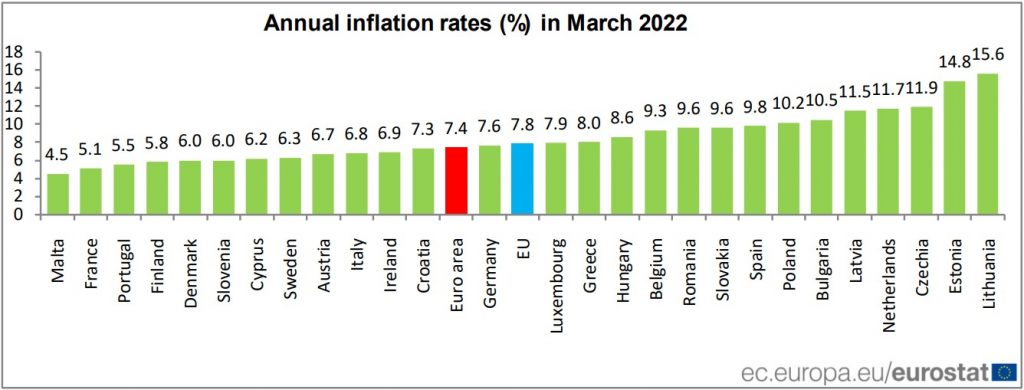
After the parliamentary elections, the end of the price cap on food and fuel would lead to a surge in inflation, according to analysts at the Hungarian Central Bank.Continue reading

Although inflation in Hungary hit a 15-year-old record in March, 11 EU countries still saw a higher increase in prices, according to Eurostat data. This puts the Hungarian level of inflation in the European Union middle range.
Consumer prices in Hungary grew by an annual 8.6 percent in March, the worst inflation figures in Hungary in 15 years.
However, according to recently published data by Eurostat, prices in Europe are rising so much that the average inflation rate of the 27 member states stands at 7.8%, which is only slightly below the Hungarian figure. In total, 11 EU countries had higher annual inflation in March than Hungary.
In central and eastern Europe, inflation was significantly higher than the EU average, at 9.6% in Romania and Slovakia, 10.2 percent in Poland, and 11.9 percent in the Czech Republic. The highest annual rates were recorded in Lithuania (15.6%), and Estonia (14.8%).

The only EU country with inflation below 5 percent was Malta, followed by France (5.1%) and Portugal (5.5%). Italy registered a 6.8% inflation rate and Germany 7.6%.
In most EU countries the reason behind the sharp increase in inflation was the soaring energy prices.
Although Eurostat has published detailed data only for the euro area, energy prices were 44.4 percent higher in these countries than a year prior. Meanwhile, food, alcohol, and tobacco products cost 5% more than in March 2021.
The Hungarian inflation factors are quite different, however. In the past months, the Hungarian government introduced several measures to halt inflation. It capped retail vehicle fuel prices from November 15. From February 1, it rolled back prices for a number of staples, including pork, cooking oil, and flour, to mid-October levels. Additionally, a state-regulated utility price scheme has been in place for years, which was able to dampen inflation by several percentage points. According to the government’s official estimates, the inflation in March would have been 13% without the measures, well over the current 8.6% rate.
Featured photo illustration by Attila Balázs/MTI